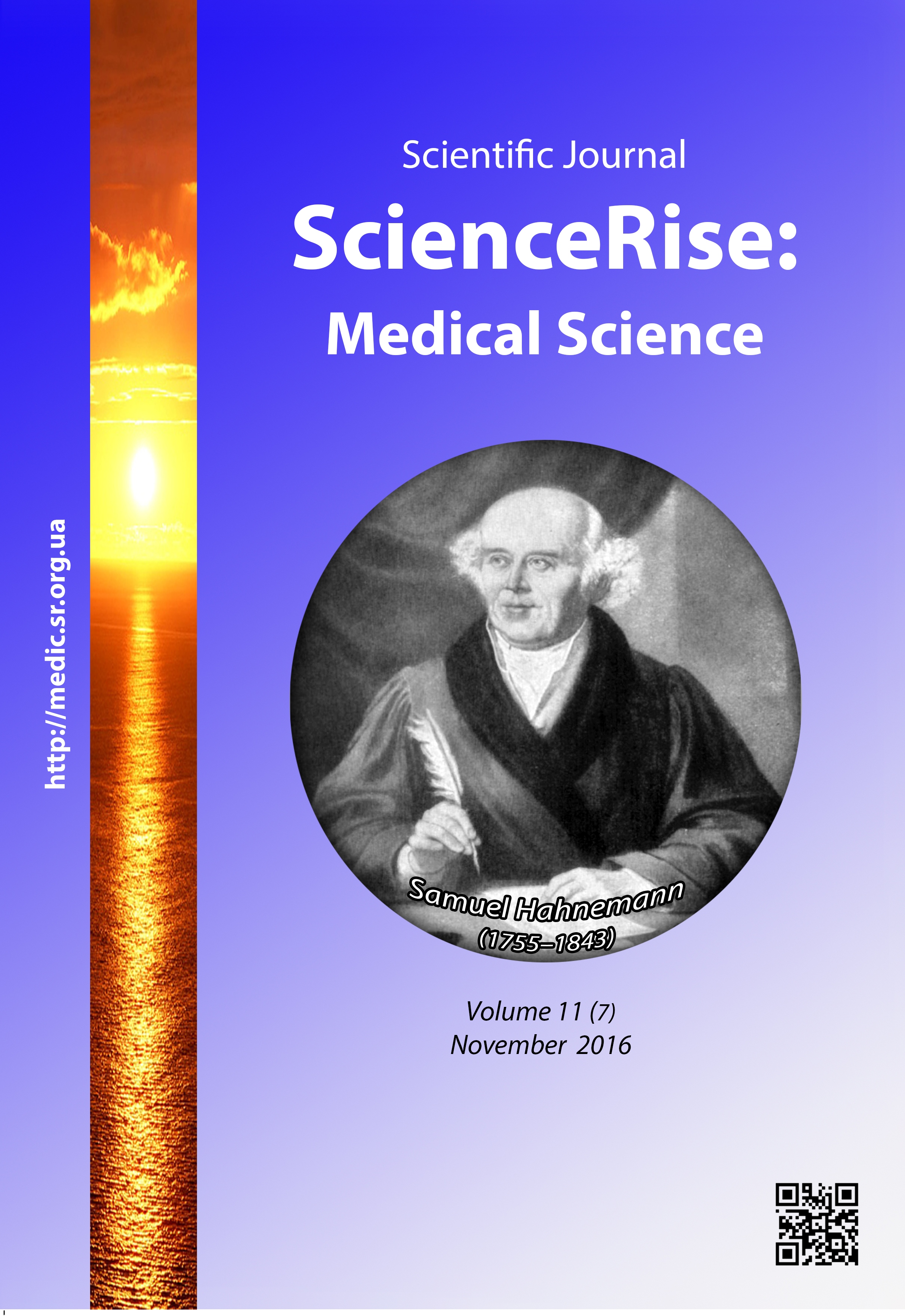The features of coping in patients with cosmetic problems and disharmonious self-attitude with heightened self-esteem
DOI:
https://doi.org/10.15587/2519-4798.2016.84940Keywords:
coping, disharmonic type of self-attitude, self-esteem, cosmetic patients, psychological help, psychodermatologyAbstract
Aim of research was to reveal the features of stress-overcoming behavior of cosmetic patients with disharmonic self-attitude and heightened self-esteem.
Contingent and methods. The research was carried out on the base of medical center “CA-CLINIC” (city Kyiv) during 2014 – 2016. The testing included 188 women, who asked for cosmetic help. The interrogated were divided in groups on the base of criterion of self-attitude: the main group included persons with disharmonic type with tendency to heightened self-esteem (MG, n=82), the control group included women with harmonic type (CG, n=96). Psychodiagnostic instrument was the questionnaire of the “Ways of overcoming behavior” by R. Lazarus and S. Folkman.
Results. For the women with disharmonic type of self-attitude and heightened self-esteem was typical the following features. The main factors of stress-overcoming behavior were confrontation and search for social support, less expressed were distancing, self-control, responsibility, planning and least expressed was the positive reassessment. The higher levels of confrontation and distancing and the lower one of positive reassessment comparing with women with harmonic type of self-attitude were revealed. The coping-profile was manifested by impetuosity, active behavior at solving problems that could lose the character of purposefulness, rigid vindication of interests, difficulties in re-formulation of personal settings, indisputability of own position, need of involvement of social resources for attraction of attention, information, active help, emotional inclusion and devaluation of problem, rationalization, ability to control oneself, to plan. The feature of coping was the growth of tension of non-adaptive and conventionally adaptive and decrease of adaptive forms of coping, presence of strategies of stress-overcoming behavior, opposite by content that totally conditioned the decrease of effectiveness in overcoming of stress.
Conclusions. The features of stress-overcoming behavior in women with disharmonic self-attitude and heightened self-esteem indicated the necessity of psychic correction within the complex program of medical-psychological helpReferences
- Sats, E. A., Slobodchikov, I. M. (2015). Features of consciousness of women as clients of cosmetic services. Modern problems of science and education, 1-1. Available at: http://cyberleninka.ru/article/n/osobennosti-samosoznaniya-u-zhenschin-klientov-kosmetologicheskih-uslug
- Bewley, A., Affleck, A., Bundy, C., Higgins, E., McBride, S. (2013). Psychodermatology services guidance: the report of the British Association of Dermatologists' Psychodermatology Working Party. British Journal of Dermatology, 168 (6), 1149–1150. doi: 10.1111/bjd.12330
- Beketova, N. (2014). Cosmetic procedures in dermatological practice: point of view of practitioner in psychodermatology. Cosmetics and medicine, 4, 74–81.
- Sharma, P., Sreejayan, K., Ghosh, S., Behere, R. (2013). Psychiatric evaluation in dermatology: An overview. Indian Journal of Dermatology, 58 (1), 39. doi: 10.4103/0019-5154.105286
- Filakovic, P., Petek, A., Koic, O. et. al. (2009). Comorbidity of depressive and dermatologic disorders – therapeutic aspects. Psychiatr. Danub., 21 (3), 401–410.
- Aleksandrov, A. A., Bagnenko, E. S. (2012). Psychological characteristics of women with cosmetic defects of the facial skin. Herald of psychotherapy, 41 (46), 52–66.
- Bodnar, L. A. (2011). Clinical-psychopathological and pathopsychological characteristics of patients who turned to plastic surgeons for rhinoplasty. Mental Health, 1-2 (30-31), 4–7.
- Conrado, L. A., Hounie, A. G., Diniz, J. B., Fossaluza, V., Torres, A. R., Miguel, E. C. et. al. (2010). Body dysmorphic disorder among dermatologic patients: Prevalence and clinical features. Journal of the American Academy of Dermatology, 63 (2), 235–243. doi: 10.1016/j.jaad.2009.09.017
- Thompson, A. R. (2013). Body image in dermatology. Mental disorders in general medicine, 2, 36–39.
- Petrova, N. N., Gribova, O. M. (2014). Dysmorphophobia in clinic of aesthetic surgery. Mental disorders in general medicine, 1, 26–30.
- Moroz, S. M., Yavorskaya, I. (2015). Dysmorphophobia and Dismorphomania: mirrors cheating. Cosmetologist, 6 (74), 108–110.
Downloads
Published
How to Cite
Issue
Section
License
Copyright (c) 2016 Михайло Анатолійович Юдін

This work is licensed under a Creative Commons Attribution 4.0 International License.
Our journal abides by the Creative Commons CC BY copyright rights and permissions for open access journals.
Authors, who are published in this journal, agree to the following conditions:
1. The authors reserve the right to authorship of the work and pass the first publication right of this work to the journal under the terms of a Creative Commons CC BY, which allows others to freely distribute the published research with the obligatory reference to the authors of the original work and the first publication of the work in this journal.
2. The authors have the right to conclude separate supplement agreements that relate to non-exclusive work distribution in the form in which it has been published by the journal (for example, to upload the work to the online storage of the journal or publish it as part of a monograph), provided that the reference to the first publication of the work in this journal is included.









